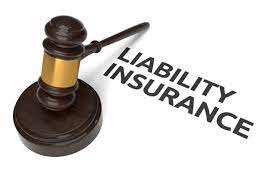Last Updated on March 12, 2024 by admin

If you have a loan or mortgage, or any long-term liability that you’re making monthly payments on, you’ll likely owe monthly principal and interest for the current year as well. The balance of the principal or interest owed on the loan would be considered a long-term liability. Accounts payable liability is probably the liability with which you’re most familiar. For smaller businesses, accounts payable may be the only liability displayed on the balance sheet.

When PBO exceeds the fair value of plan assets, the plan is said to be ‘underfunded,’ and such excess amount is recorded as a pension liability in the employer’s balance sheet. Pension obligations give rise to liabilities in case of defined benefit plans only, where the employer promises to pay a specific amount to retired employees, based on their salaries, period of service, etc. Learn accounting fundamentals and how to read financial statements with CFI’s free online accounting classes.
Table of Contents
Liabilities Vs Expenses
The sales proceeds of a bond issue are determined by discounting future cash payments using the market rate of interest at the time of issuance . The reported interest expense on bonds is based on the effective interest rate. Consider the example of American pharmaceutical company Pfizer Inc. It contains Pension liabilities, in addition to debt and deferred taxes.

There are more in depth versions of the program that you may need depending on how much information you’re looking for. But for general numbers on each building you own, the free version works just fine. Essentially rendering Quickbooks, just a book keeping program to be able to easily file taxes. That is the closest workaround that I can think of to show your mortgage payments and other expenses in one report. Long-Term Liabilitiesmeans all Indebtedness and other long term liabilities of the Company or any of its subsidiaries on a consolidated basis determined in accordance with GAAP .
Our Top Accounting Software Partners
It is important to consider these off-balance-sheet-financing arrangements because they have an immediate impact on a company’s overall financial health. Another example of off-balance-sheet financing is an operating lease, which are typically entered into in order to use equipment on a short-term basis relative to the overall useful life of the asset. An operating lease does not transfer any of the rewards or risks of ownership, and as a result are not reported on the balance sheet of the lessee.
The quick ratio is a calculation that measures a company’s ability to meet its short-term obligations with its most liquid assets. Current liabilities are a company’s debts or obligations that are due to be paid to creditors within one year. Sage 50cloud is a feature-rich accounting platform with tools for sales tracking, reporting, invoicing and payment processing and vendor, customer and employee management. Though not used very often, there is a third category of liabilities that may be added to your balance sheet. Called contingent liabilities, this category is used to account for potential liabilities, such as lawsuits or equipment and product warranties. We explain current and long-term liabilities and how each type impacts your business. Mattman8, this doesn’t help with operating your quickbooks, but I ran into the same problem a couple years ago as I started to expand my rental portfolio.
Type 4: Taxes Payable
Section 9 introduces pension accounting and the resulting non-current liabilities. Section 10 discusses the use of leverage and coverage ratios in evaluating solvency. A liability is something a person or company owes, usually a sum of money.
- If long term liabilities are a high proportion of operating cash flows, then it could create problems for the company.
- Bonds payable are always considered a long-term liability and they are often issued by hospitals, local governments or utilities.
- The long-term liabilities will not show up in your Profit and Loss statement since this report will show your total income, your gross profit, expenses, and your net income or loss.
- Although permitted to do so, few companies opt to report debt at fair values on the balance sheet.
- Liability may also refer to the legal liability of a business or individual.
- Learn more about the standards we follow in producing Accurate, Unbiased and Researched Content in our editorial policy.
- Long-term liabilities are those obligations of a business that are not due for payment within the next twelve months.
There are certain capital intensive industries like power and infrastructure which require a higher component of long term debt. However, an excessively high component of long term loans is a red flag and may even lead to the organization going into liquidation. You can see they have some deferred taxes and deferred revenue as well. When a formal loan agreement has payment terms that go beyond one year , this is a notes payable.
The Top 25 Tax Deductions Your Business Can Take
Lawsuits and the threat of lawsuits are the most common contingent liabilities, but unused gift cards, product warranties, and recalls also fit into this category. AP typically carries the largest balances, as they encompass the day-to-day operations. AP can include services,raw materials, office supplies, or any other categories of products and services where no promissory note is issued. Since most companies do not pay for goods and services as they are acquired, AP is equivalent to a stack of bills waiting to be paid. Liabilities are a vital aspect of a company because they are used to finance operations and pay for large expansions.
For this situation, I would suggest running a Profit and Loss report instead of an expense report. The Profit and Loss report will recognize any payments that you’ve made, including the Long Term Liability account. Alson, in insights page, we are not getting the right amount because these payments made to these accounts do not show up. So, how can I get a report where shows me everything we have pay during that year, month or even week? Long-Term Liabilitiesmeans the liabilities of Borrower on a Consolidated basis other than Current Liabilities and deferred taxes. Since the entire long term portion of capital may not be funded by shareholders funds, long term loans come into the picture.
What Does “net Working Capital” Mean?
The current ratio is a liquidity ratio that measures a company’s ability to cover its short-term obligations with its current assets. Companies of all sizes finance part of their ongoing long-term operations by issuing bonds that are essentially loans from each party that purchases the bonds. This line item is in constant flux as bonds are issued, mature, or called back by the issuer. Any mortgage payable is recorded as a long-term liability, though the principal and interest due within the year is considered a current liability and is recorded as such. Both income taxes and sales taxes need to be properly accounted for. Depending on your payment schedule and your tax jurisdiction, taxes may need to be paid monthly, quarterly, or annually, but in all cases, they are likely due and payable within a year’s time. The principal reduction of any loan liability is never an expense and since it is not an expense is never calculated in profit or loss.
Please complete this reCAPTCHA to demonstrate that it’s you making the requests and not a robot. If you are having trouble seeing long term liability or completing this challenge, this page may help. If you continue to experience issues, you can contact JSTOR support.
The term of the lease is at least 75% of the asset’s useful life. Bonds are typically secured i.e., backed by specific collateral assets.
- Capital leases are not as straightforward as some of the other liabilities because they involve the leasing rather than the purchasing of equipment.
- Notes payable are functionally the same as bonds, although they have a shorter maturity period.
- In general, a liability is an obligation between one party and another not yet completed or paid for.
- I need a means to include this in my profit loss report as an expense so I can see true cash flow.
- They appear on the balance sheet after total current liabilities and before owners’ equity.
He holds a Master of Business Administration from Iowa State University. We note that the common stock is the riskiest to the investor, whereas short-term bonds are the least risky. At the end of the lease period, ownership of the leased asset is transferred to the lessee.
What Are The Main Types Of Liabilities?
Liabilities includes all credit accounts on which your business owes principal and interest. These debts typically result from the use of borrowed money to pay for immediate asset needs.
When using accrual accounting, you’ll likely run into times when you need to record accrued expenses. Accrued expenses are expenses that you’ve already incurred and need to account for in the current month, though they won’t be paid until the following month. The best way to track both assets and liabilities is by using accounting software, which will help categorize liabilities properly.
Typically, companies use long-term loans to purchase major assets for long-term use. Buildings and equipment are examples of items that often require a major loan for purchase.
- Molly obtained a loan from the bank specifically to help finance the purchase of her retail store.
- While the loan itself is considered a long-term liability, the principle and interest payments are considered short term liabilities because they are due within a set term, usually less than a year.
- The Debt-to-Equity Ratio is a financial ratio that compares the debt of a company to its equity and is closely related to leveraging.
- He tells her she should include in her presentation some of the more purposeful long-term liabilities, such as bonds, pensions, long-term leases and mortgages.
- These costs go to former employees who are retirees of your business and are still receiving health benefits following retirement.
Author: Andrea Wahbe



























